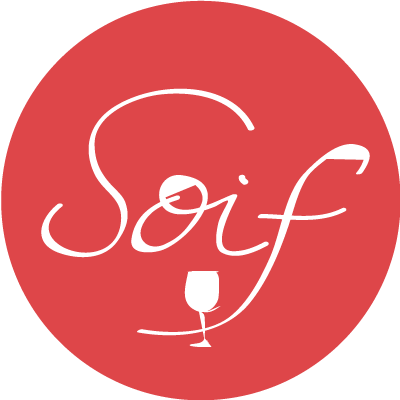Chateau Thivin Beaujolais Blanc “Clos de Rochebonne”
This month’s white wine comes from one of our favorite regions in all of France, Beaujolais. If you’ve been in the club for a while, chances are you’ve had a bottle or two of the red version, made from the Gamay Noir grape. But unless you ‘ve come in to the shop asking for one of the geekiest bottles around, it’s a lot less likely that you’ve tasted Beaujolais Blanc.
Yep that’s right there is such a thing—though it is a rarity. Beaujolais Blanc constitutes only about 1% of the region’s total production. The grape here is Chardonnay, which is not too surprising considering Beaujolais is sometimes considered part of Burgundy, home to some of the fanciest Chardonnay neighborhoods in the world.
Vineyards were planted in Beaujolais as early as the roman times, the most notable of which was in the southern part of Beaujolais on Mont Brouilly, an extinct volcano that has been home to the Thivin Estate since the 1500s. Travel about ten miles south of the domaine and you’ll hit the quaint town of Theize, home to the Chateau de Rochebonne, a grand 14th century chateau that is definitely google-worthy. The “Clos de Rochebonne” is a walled vineyard that was historically attached to this chateau. The soils here are limestone and clay, quite different from the granitic soils on Mont Brouilly, but exceptional for Chardonnay production.
I recently poured this wine blind (unfairly) for some fellow wine nerds. Needless to say they were stumped, because it doesn’t fit in a traditional Chardonnay box. It’s not oaky or fruit driven like a ripe California example. It’s not chalky and lithe like a classy Chablis nor structured and crunchy like white Burgundy from the Côte de Beaune. It’s decidedly old-world with no oakiness (the wine is aged in neutral wood) and ample acidity, but it’s also soft and gentle with notes of white flowers and cream. In Beaujolais they have a word to describe the way the best wines of the region effortlessly slip down one’s throat—Gouleyant. Damn, whatever that is, we want it!
This wine definitely applies. Go all out and drink it with some delicate white fish and new potatoes with butter or cream. Whole thirty can wait.
Pecchenino Dogliani Dolcetto “San Luigi”
I recently had the pleasure of dining at a very fancy, Michelin-starred restaurant. Every very bite was intentional, thought out to the minutest detail. Every sip was expertly paired, and there was an army of people making sure I had a fresh napkin every time I left the table. It was spectacular. My brain was on overload trying to keep track of exotic salts and fish I’d never heard of and invisible mozzarella. Though an incredible thing to experience, it was not something I could do every night.
Wine is the same for me. I love a beautiful bottle of fancy Barolo just as much as any wine geek, but sometimes I want a bottle just to drink without any fanfare. Sometimes I don’t want to think about the secondary and tertiary aromas, what percentage is aged in new oak, or if it’s in the proper drinking window. That being said, I still want to drink something GOOD.
It’s like the scene in Chef when John Favreau makes the perfect grilled cheese. It’s not a fifteen course tasting menu, but it’s still delicious.
Dolcetto is important for similar reasons. It’s a wine drank nightly in Piemonte, while Barolo and Barbaresco age in the cellar. Dolcetto literally means “little sweet one” and while there are differing ideas about how it got this name, when tasted next to the fiercely acidic Barbera and Nebbiolo wines of the region it makes sense. Its natural tendencies toward lower acidity can amplify its bright fruitiness giving the impression of sweetness.
Needless to say, we all need a little more Dolcetto in our lives.
This month’s wine is from the Pecchenino estate (stop what you’re doing right now and check out their website! It’s probably what Piemonte looks like right about now). This family-run estate is based in the commune of Dogliani, an area especially suited to Dolcetto production. Records indicate that Dolcetto has called these rolling hills home since the 1400s. At Pecchenino, 70% of the production is devoted to Dolcetto, and they are recognized as a specialist in the area. The “San Luigi” is their entry-level wine, and consistently one of my favorites. It’s raised in stainless to preserve the ripe blue fruit and licorice-y herbal aromas making it the perfect accompaniment to pasta, pizza, or even exotic cuisines like Moroccan foods.








